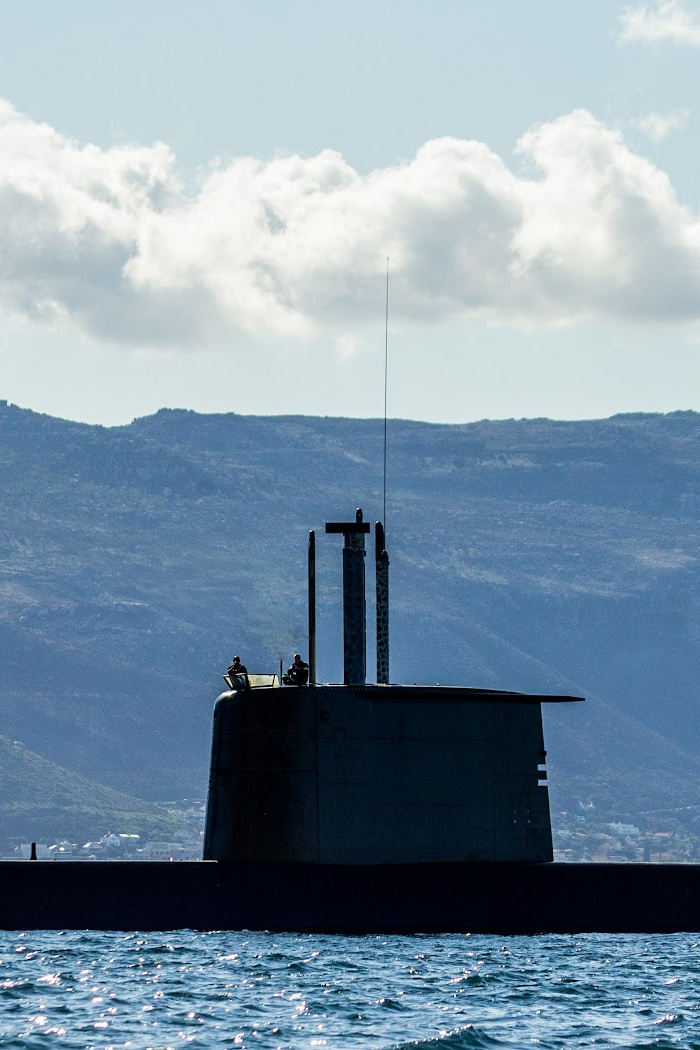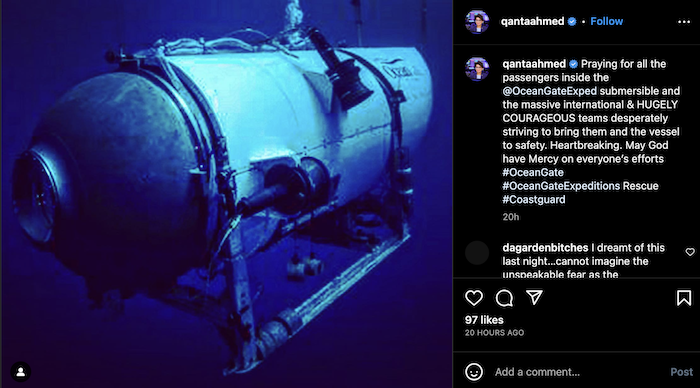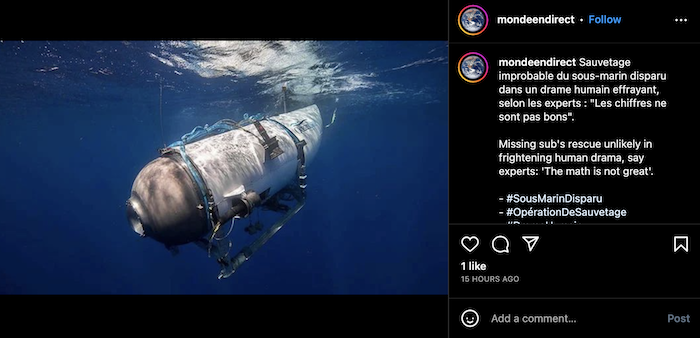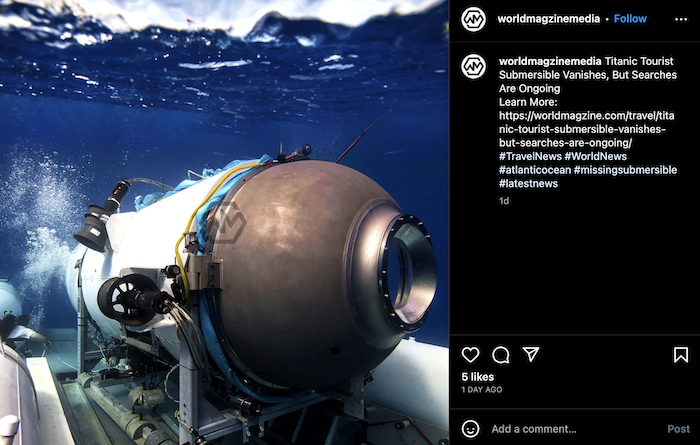Here’s Why Search and Rescue Teams Are Having a Hard Time Finding the Missing Titanic Tour Sub
Rescuers are in a race against time to find the five individuals stuck in the missing Titantic sub, otherwise known as the “Titan”, but that’s not the only problem crews face in order to locate the submersible vessel.
Another difficulty is how far deep into the ocean the Titan could be, and not to mention other obstacles crews may face such as weather changes, locating the vessel in darkness, etc.

Crews have been urgently searching the remote part of the North Atlantic near the Titanic, which is approximately 435 miles south of St. John’s, Newfoundland.
In fact, the location of the submersible could be as deep as about 12,500 feet below the surface which in retrospect, is twice as deep as the grand Canyon.

Visually, here are a photos from a chart to show you just how deep the Titan could be and how difficult this search and rescue mission is.



Throughout the sea search, rescue teams such as the U.S. Coast Guard, Canadian authorities, and commercial vessels are all searching for the missing vessel.
So far, at least 10,000 square miles have been searched, according to the U.S. Coast Guard.

According to CNN while citing an internal U.S. government memo, sonar buoys have been dropped onto the surface of the ocean which have detected banging noises that could be a glimmer of hope for this rescue mission.
Although it’s still not as simple as it may sound to find where the noises came from, as sonar buoys detect activity in vast areas of the ocean of where they are dropped.

And the reason why other vehicles are having trouble getting to the submersible is because they risk being imploded the farther they go down into the ocean.
“They’re in a very deep part of the ocean, they’re a long way from the coast as well so getting any sort of rescue attempt to them is going to take time and there are very few vessels that are capable of going to those sorts of depths,” explains Oceanographer Dr. Simon Boxall to GB News.
Dr. Simon Boxall

According to GB News, the vehicles that were sent down imploded after attempting to go deeper into the ocean as the vehicles can only manage 3,000 meters while the submersible could be sitting at 3,800 meters.
As this rescue mission is against a ticking clock to save the five individuals trapped in the Titan, we’re hoping they’re soon found, returned home safely, and reunited with loved ones before the clock runs out.







